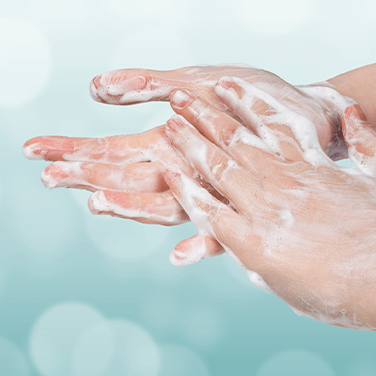4 Common Hand Sanitation Mistakes and How to Solve Them
By Christina Phillis
Providing proper hand sanitation for your employees may seem simple, but poor or incomplete hand cleaning can cost your company money and reduce productivity. It takes just one person not washing their hands to infect half of your employees in a matter of hours.
Here are four common mistakes you might be making and how to fix them.
1. Contaminated Soap
We’re all familiar with large tubs of soap that just keep getting refilled time after time. Because this is an open container that just sits there, it can become contaminated over time. It may leave your hands dirtier than before you washed them. Make sure you’re using a soap dispensing system that utilizes sealed refills to keep the soap fresh and sanitary.
2. Poor Product Placement
In large facilities like automotive assembly plants, restrooms may be quite far from workstations. Place hand sanitizer stations throughout factories and other large workspaces to help decrease the spread of germs while maintaining productivity. If you don’t take these precautions, employees are more likely to spread germs to their coworkers.
In healthcare settings and other situations where employees must frequently wash their hands, dry and cracked skin is more common and can lead to cuts and infections. Direct medical expenses for treating contact dermatitis are more than $1.4 billion per year, according to a report prepared by the Lewin Group for the Society for Investigative Dermatology and the American Academy of Dermatology Association. Strategically placed lotion dispensers can help employees keep their hands conditioned and prevent skin infections and irritations. GOJO Industries reported that routine conditioning can improve one’s skin in as little as 14 days, and intact skin helps to make contaminant removal quicker and easier.
3. Outdated Product
Soap, like food, has an expiration date, and can become less effective or contaminated over time. Replace hand soap and sanitizers regularly to ensure that your employees have access to the most effective hand sanitation.
4. Broken Soap Dispensers
Soap dispensers may crack, which can lead to soap contamination and less effective hand cleaning. Or they may break or malfunction, which can discourage employee use. Make sure to inspect and replace dispensers often.
The Cost of Poor Hand Sanitation
When employees miss work due to illness, the employer may be forced to hire a temporary worker or ask their full-time employees to work overtime for coverage. According to a report by Circadian: 24/7 Workflow Solutions, an absent employee costs a company more than $2,500 a year.
The CDC estimates that 80% of infections are hand-transmitted. A comprehensive hand hygiene program can help reduce absenteeism by up to 51% (according to GOJO Industries Inc.) and have a positive effect on your company’s bottom line.
Implementing a Hand Hygiene Program
An effective and comprehensive hand hygiene program requires the use of four key elements:
- Hand sanitizers
- General-purpose soap
- Heavy-duty soap
- Lotions
Selecting the right product for end users is dependent on their specific work environment and the soils involved. General-purpose soap is optimal for restrooms and in situations with lighter soils. Sanitizers are ideal for placement throughout facilities in spaces like restrooms, breakrooms, cafeterias, and office settings. Heavy-duty soaps are the solution if employees are introduced to heavy soils like oil, grease, paint, tar, and adhesives. Any combination of these products will depend on the end user and their environment.
OSHA has clear safety and health regulations for hand care, including this construction site example:
“The employer shall provide adequate washing facilities for employees engaged in the application of paints, coating, herbicides, or insecticides, or in other operations where contaminants may be harmful to the employees. Such facilities shall be in near proximity to the worksite and shall be so equipped as to enable employees to remove such substances.” – OSHA 1926.51, 1926 Subpart D
Request a professional evaluation of your work site to make sure that you have the most effective hand hygiene program in place. Experts can identify opportunities for improvement and suggest specific products to implement or improve your program. GOJO International provides comprehensive solutions for clean and healthy workplaces. Contact your Fisher Scientific sales representative to find out more.



